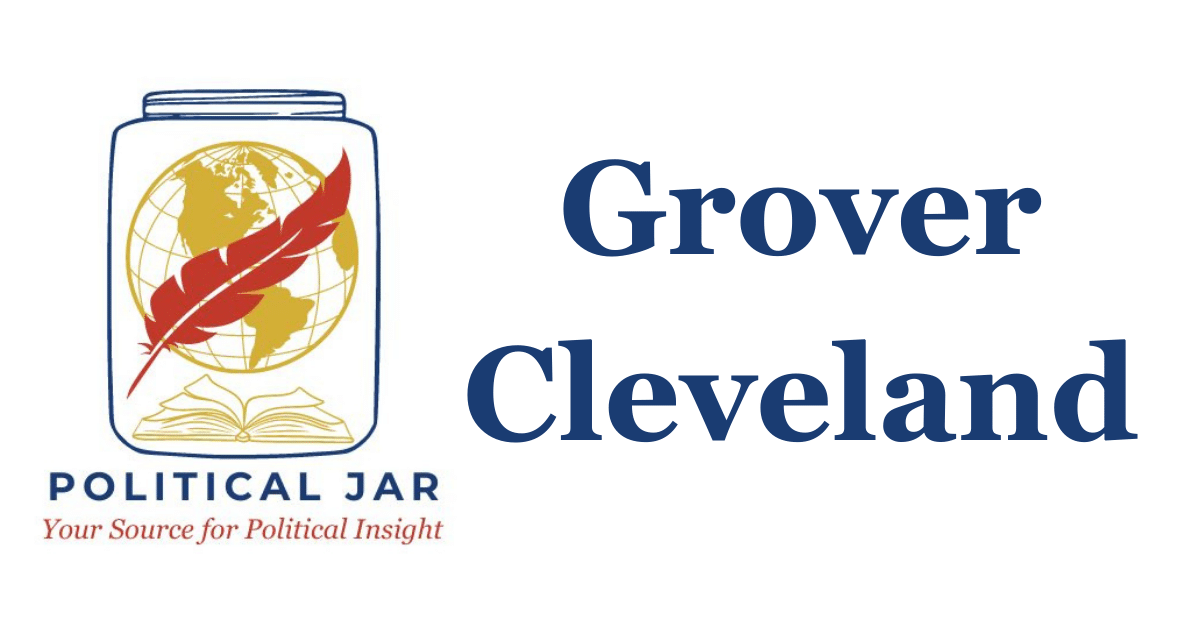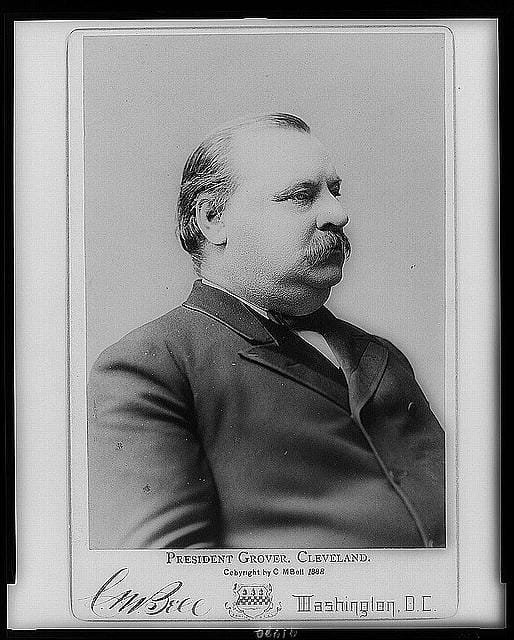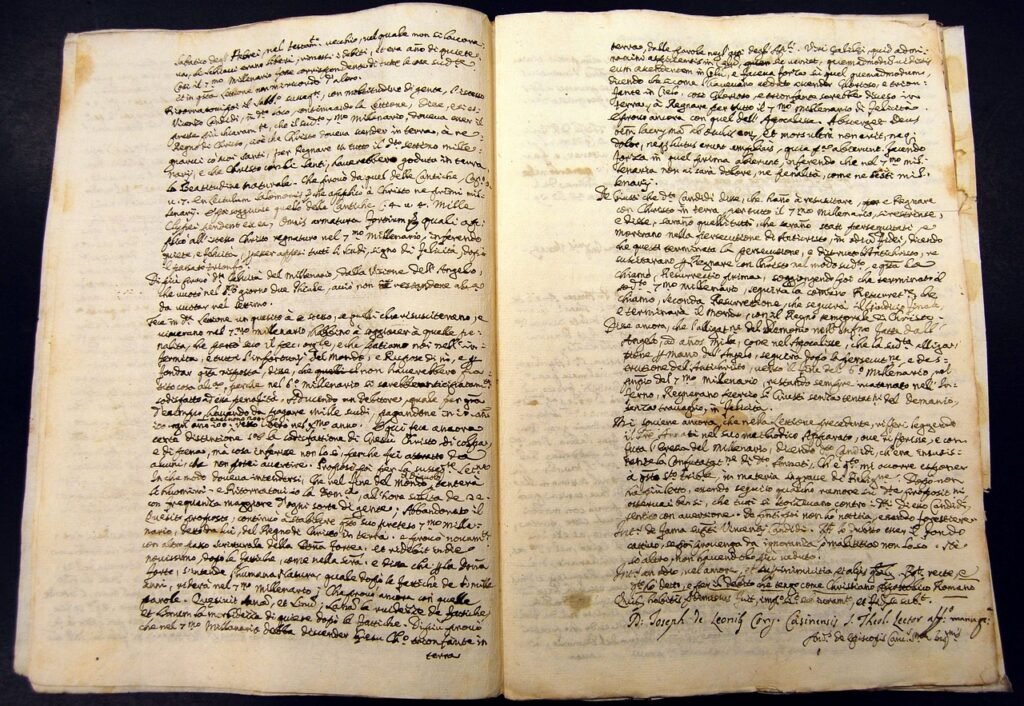




Grover Cleveland
Stephen Grover Cleveland, the 22nd and 24th President of the United States, remains a unique figure in American history. As the first president to serve two non-consecutive terms, Cleveland’s political career was marked by his steadfast commitment to principles of honesty, efficiency, and reform. His tenure, spanning from 1885 to 1889 and again from 1893 to 1897, was characterized by efforts to combat corruption, fiscal conservatism, and challenges posed by the economic upheavals of the late 19th century.
Early Life and Education
Grover Cleveland was born on March 18, 1837, in Caldwell, New Jersey. He was the fifth of nine children in a modest household. His father, Richard Falley Cleveland, was a Presbyterian minister, and his mother, Ann Neal Cleveland, was devoted to their large family (Nevins, 1932). The Cleveland family moved frequently due to his father’s pastoral assignments, which instilled in young Grover a sense of resilience and adaptability.
Cleveland’s formal education was sporadic due to financial constraints. After his father’s death in 1853, Cleveland left school to help support his family. He initially worked as a teacher at the New York Institution for the Blind before studying law in Buffalo, New York, where he was admitted to the bar in 1859 (Jeffers, 2000).
Early Political Career
Cleveland’s legal career in Buffalo was successful, earning him a reputation for integrity and hard work. He became the Assistant District Attorney of Erie County in 1863 and later the Sheriff of Erie County from 1871 to 1873, where he personally carried out executions to spare his deputies from the traumatic experience (Jeffers, 2000).
Cleveland’s rise in politics was marked by his election as Mayor of Buffalo in 1881. As mayor, he gained recognition for his fight against political corruption and his insistence on transparency and fiscal responsibility. His efforts in Buffalo caught the attention of the state Democratic Party, which led to his nomination and subsequent election as Governor of New York in 1882 (Graff, 2002). As governor, Cleveland continued his crusade against corruption, vetoing bills he deemed wasteful and promoting reforms.
First Presidential Term (1885-1889)
Grover Cleveland’s rapid political ascent continued with his election as the 22nd President of the United States in 1884. His first term was notable for his staunch opposition to patronage and his advocacy for civil service reform. Cleveland’s administration implemented the principles of the Pendleton Civil Service Reform Act, striving to reduce the influence of political patronage in government appointments (Nevins, 1932).
Cleveland’s commitment to fiscal conservatism was evident in his numerous vetoes, particularly of pension bills for Civil War veterans that he viewed as fraudulent or excessive. This stance made him unpopular among some veteran groups but underscored his dedication to reducing government expenditure and maintaining a balanced budget (Graff, 2002).
One of Cleveland’s significant challenges during his first term was addressing the issue of tariffs. He supported lower tariffs to reduce the cost of goods for consumers and to promote fair competition. His advocacy for tariff reform was a contentious issue and contributed to his defeat in the 1888 presidential election against Benjamin Harrison, despite winning the popular vote (Jeffers, 2000).
Second Presidential Term (1893-1897)
Cleveland returned to the presidency in 1893, the only president to serve non-consecutive terms. His second term was overshadowed by the Panic of 1893, a severe economic depression. Cleveland’s response to the economic crisis was to maintain the gold standard and repeal the Sherman Silver Purchase Act of 1890, which had required the government to purchase large amounts of silver and issue silver certificates (Dunne, 2004). His actions stabilized the economy but alienated the pro-silver wing of the Democratic Party.
During his second term, Cleveland faced significant labor unrest, most notably the Pullman Strike of 1894. He dispatched federal troops to break the strike, asserting that it was his duty to ensure the delivery of mail and maintain law and order. This decision was controversial and drew criticism from labor unions and some political allies (Dunne, 2004).
Cleveland’s second administration also saw the passage of the Wilson-Gorman Tariff Act in 1894, which attempted to lower tariffs but was compromised by numerous amendments that diluted its effectiveness. Additionally, his presidency was marked by foreign policy challenges, including the boundary dispute between Venezuela and British Guiana, where Cleveland supported arbitration, reflecting his preference for peaceful resolutions in international conflicts (Graff, 2002).
Personal Life and Character
Cleveland was known for his personal integrity and unyielding principles. His marriage to Frances Folsom in 1886 was a significant public event, as he was the first president to be married in the White House. Their marriage was considered a happy one, and they had five children (Nevins, 1932).
Cleveland’s straightforward and unpretentious nature endeared him to many Americans. He was often described as honest, courageous, and a man of few words but strong convictions. His insistence on doing what he believed was right, regardless of political consequences, defined his leadership style (Jeffers, 2000).
Legacy
Grover Cleveland’s presidency is remembered for his efforts to uphold principles of honesty and efficiency in government. His commitment to civil service reform, fiscal conservatism, and maintaining the gold standard had lasting impacts on American politics and governance. Cleveland’s insistence on adhering to his principles, even at the cost of political popularity, set a standard for integrity in public service.
Cleveland’s legacy is also marked by his complex relationship with labor and economic policy. His actions during the Panic of 1893 and the Pullman Strike reflect the tensions between maintaining order and addressing the needs of workers in a rapidly industrializing nation. While his economic policies were often controversial, they demonstrated his dedication to stability and fiscal responsibility (Dunne, 2004).
Historians generally regard Cleveland as a president who, despite the challenges and controversies of his time, remained true to his convictions. His non-consecutive terms symbolize a resilience and enduring influence in American political history, underscoring his unique place among U.S. presidents.
Final Summary
Grover Cleveland’s presidency is a study in steadfastness and principled leadership. His rise from humble beginnings to the highest office in the land exemplifies the American ideal of self-made success. Cleveland’s unwavering commitment to reform, fiscal responsibility, and integrity in government left an indelible mark on the nation. His life and career offer valuable lessons in the importance of adhering to one’s principles in the face of political adversity.
References
Dunne, G. H. (2004). Grover Cleveland: A Study in Character. Henry Holt and Company.
Graff, H. F. (2002). Grover Cleveland. Times Books.
Jeffers, H. P. (2000). An Honest President: The Life and Presidencies of Grover Cleveland. HarperCollins.
Nevins, A. (1932). Grover Cleveland: A Study in Courage. Dodd, Mead & Company.